India’s Startup Mafia 2.0: Oyo, Ola, Udaan lead the wave of entrepreneurship; more women logging out of tech jobs
Also in the letter:
■ Byju’s lenders seek loan amendment proposal for disputed TLB
■ Amazon Pay counts on wallets to push payments business
■ LogiNext cofounder Manisha Raisinghani leaves to start SaaS firm
Exclusive | India’s Startup Mafia 2.0: Oyo, Ola, Udaan spawn most number of entrepreneurs

Hi, Pranav Mukul here in New Delhi. Business fundamentals like topline and profitability notwithstanding, a major marker of a maturing startup ecosystem is the number of ventures spawned by existing companies. In the first phase, prominent startups like Flipkart, Myntra, InMobi, Makemytrip laid the ground for the next generation of internet entrepreneurs. This led to a new wave of firms such as Oyo, Ola Cabs, Paytm, Udaan, Freshworks incubated by the so-called ‘startup mafia’.
Capital, talent: Drawing on a record inflow of venture capital in the past decade, 297 founders set up some 253 new companies, triggering talk of a ‘startup mafia’. These entrepreneurs have come from companies like Zomato, Zoho, Freshworks, Paytm, Citrus Pay, Snapdeal, Swiggy, Udaan, Oyo, and Ola, according to data analysed by Longhouse Consulting, a talent advisory firm, for ETtech.
For the study, Longhouse Consulting considered executives who had spent two years at a startup, and launched a venture within two years of quitting. In addition, they had to have either raised over $1.5 million in funding, or hired a team of over 25 people.
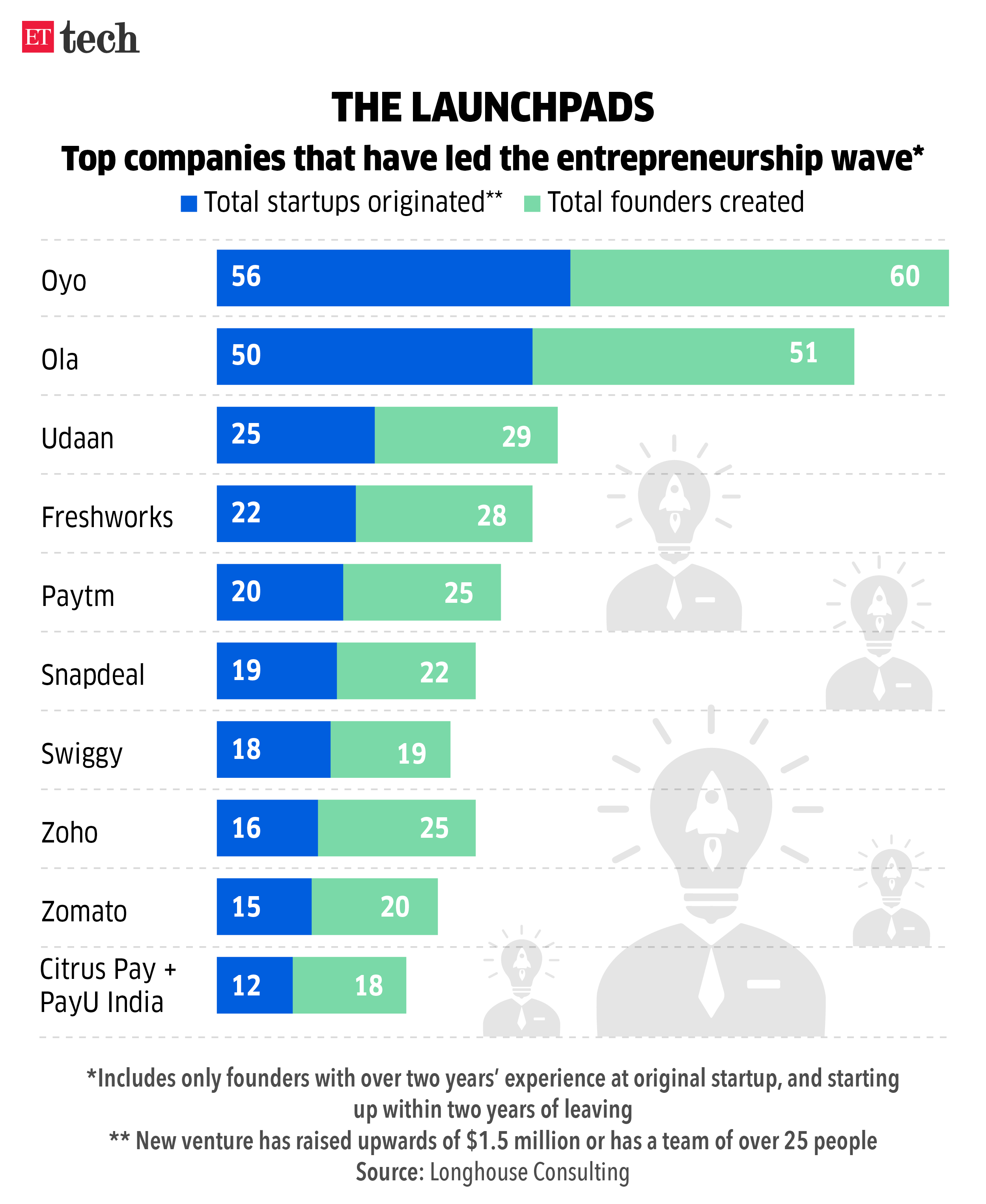
What’s a startup mafia? The term ‘mafia’ for startup executives who go on to launch their own ventures draws from the famous ‘PayPal Mafia’ moniker, which was used to describe former employees of the payments platform who became entrepreneurs.
In addition to PayPal, other Big Tech companies like Google, Facebook, and Twitter also saw some of their top executives take a leap into entrepreneurship, establishing popular internet companies including Instagram, Pinterest, Quora, Medium, and Square. Entrepreneurs graduating from highly successful firms come with domain expertise and specific skill sets as they have hustled to build business lines. All this is attractive to investors.
Past, future, present: The first generation of the startup mafia included Udaan founders Vaibhav Gupta, Sujeet Kumar, and Amod Malviya, who were senior executives at Flipkart. Albinder Dhindsa, founder of Blinkit (earlier Grofers) came out of Zomato. The firm was subsequently acquired by the food-tech company.
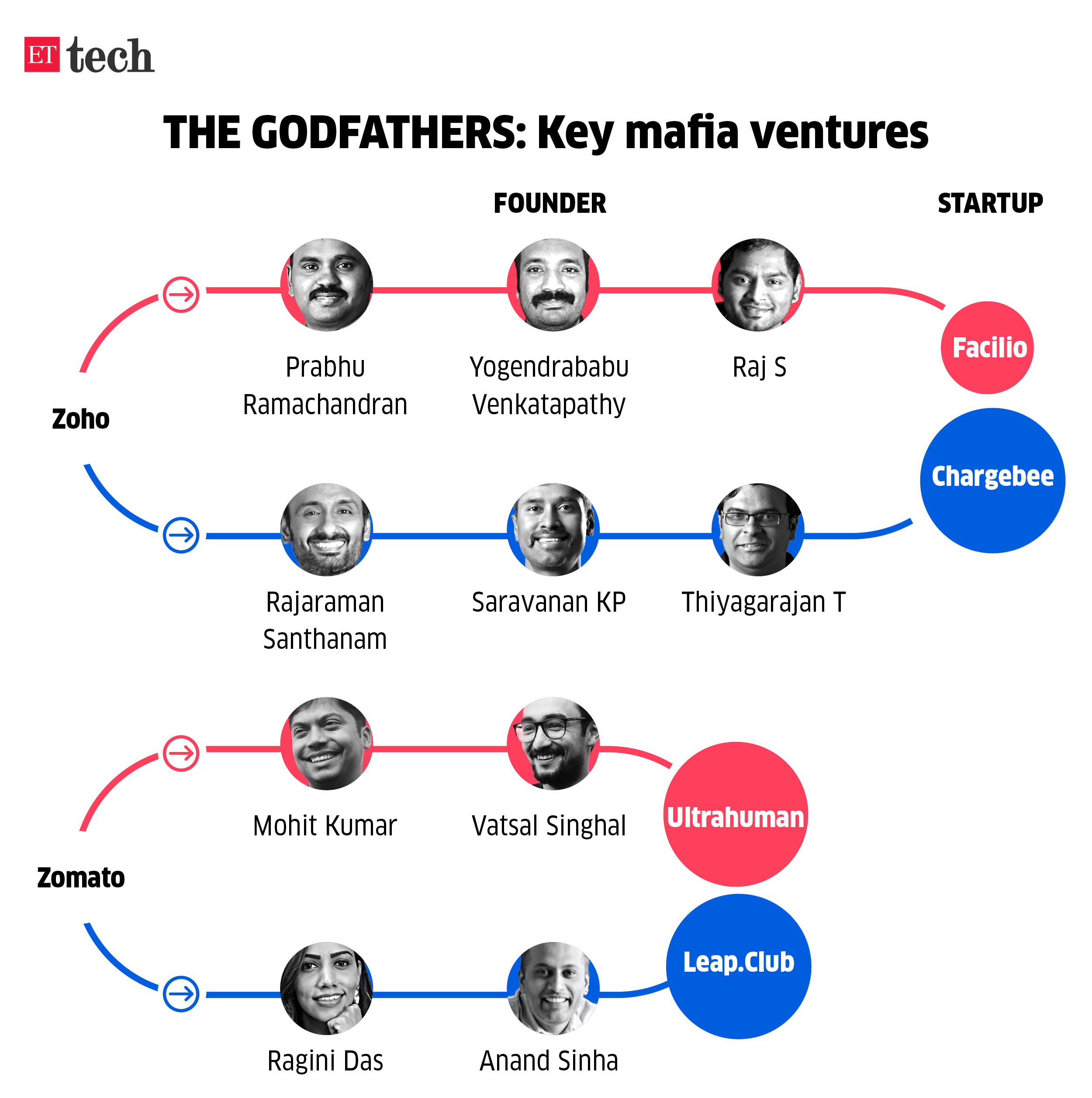
Interestingly, software-as-a-service (SaaS) company Freshworks, which itself has become a significant launchpad for entrepreneurs, was founded by former executives of Zoho.
The new generation of the mafia includes founders such as Mohit Kumar and Vatsal Singhal of Ultrahuman, Ragini Das and Anand Sinha of Leap Club, Amit Lakhotia of Park+, Nitin Gupta and Prateek Jindal of Uni Cards, Anish Achuthan and Mabel Chacko of Open Financial Technologies, and Arvind Parthiban of Superops.ai.
Giving them the edge: According to the mafioso, working with well-scaled organisations prior to branching off helped learn how to manage large and complex problems, and equipped them with the necessary skills for entrepreneurship.
Apart from the exposure, the culture and the space to make mistakes in the organisations they used to work in also helped them in their entrepreneurial journey.
More women logging out of tech jobs

As the effects of Covid-19 wane and companies insist on employees returning to office, the attrition of women has doubled compared to that of men in India’s technology industry, data from recruiters and exit interview firms shows.
In numbers: Female employee attrition has been as high as 30-40% in recent months, compared with the standard attrition level of around 15% in the tech sector, suggests data from Incruiter, a provider of exit interview services.
Women in mid-career roles (aged 30-40 years) are the ones leaving the most, as they tend to deal with a disproportionate share of childcare and domestic responsibilities.
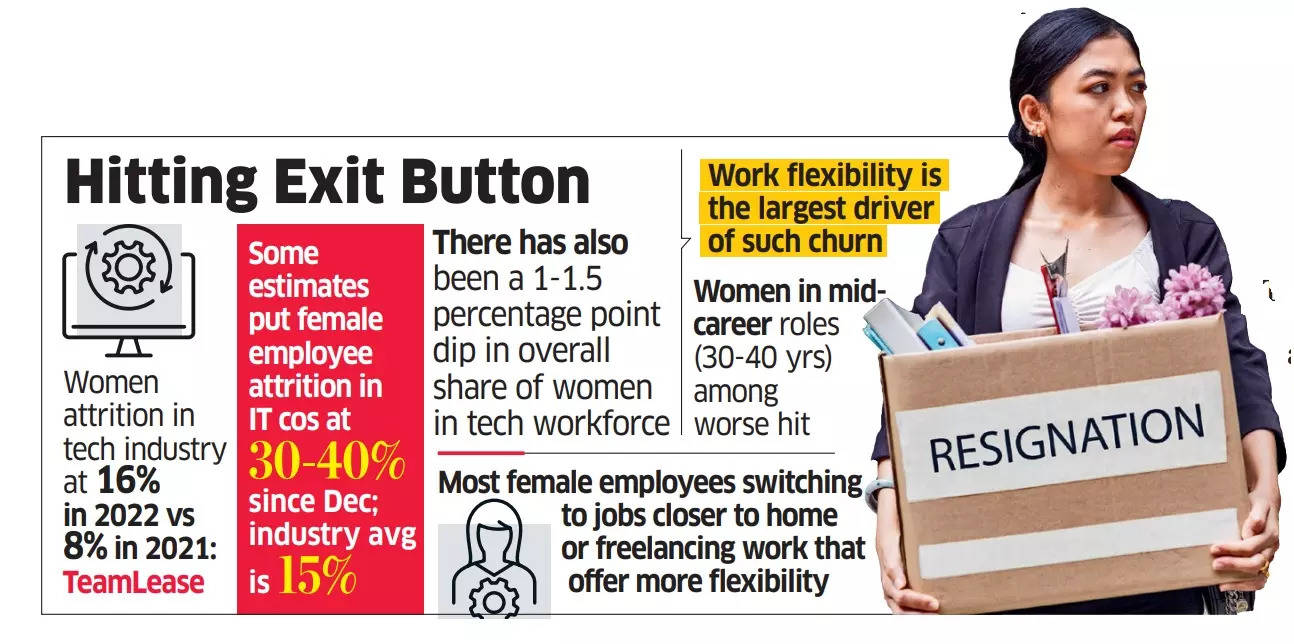
Options for women: Many of the women are still looking for flexible work options. Most are switching to roles closer to home or even picking up gig / freelance jobs that provide more flexibility, the data suggests.
Over the years: In 2021, attrition among women in the tech industry was 8%, well under the overall reading of 20%, according to data from TeamLease Digital, a hiring firm. By the end of 2022, about 16% of female employees had left their jobs, compared with the industry average of 15%, showing that the churn among women had surpassed that of men. This has widened now.
How are top players faring? The top three IT companies — Tata Consultancy Services (TCS), Infosys and Wipro — have said that the share of women in their workforce has remained almost the same. However, TCS annual report released last week stated that attrition among women at the company had gone up in FY22-23.
Byju’s lenders seek loan amendment proposal for disputed TLB

As the battle between edtech startup Byju’s and its lenders over the $1.2 billion term loan B (TLB) intensifies, the creditors have made it clear that they want the company to send a draft loan amendment proposal, even as the scheduled call between the parties on Monday was cancelled, people familiar with the matter told ET.
Details: While the lenders remain open to negotiations, they have rejected the Indian edtech’s request for one-on-one meetings, the people quoted above added. The lender group had signed a cooperation agreement earlier that requires them to act together in negotiations, a source said. Bloomberg reported the development first on Tuesday evening.
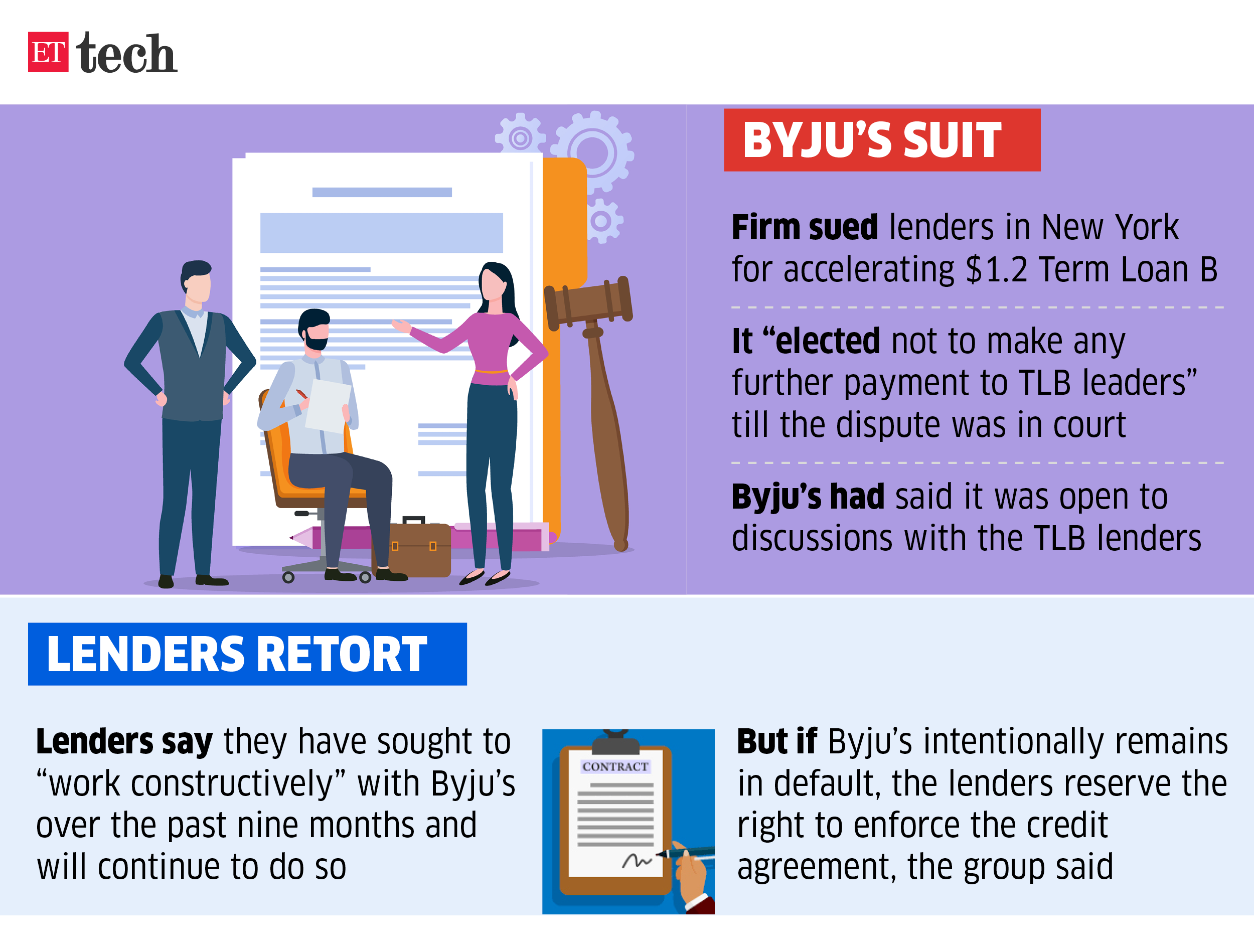
Recap: Last week, Byju’s said the lenders’ demands were “high-handed” while filing its suit in the New York Supreme Court against the American investment management firm Redwood and its related entities over the TLB.
Byju’s missed its quarterly interest payment of about $40 million on the TLB, which was due by June 5, even as it sought to “disqualify” lender Redwood, which it alleged had resorted to “predatory tactics”, and consistently increased its exposure to the loan by acquiring sizeable stake in the TLB with “the intent of making windfall gains”.
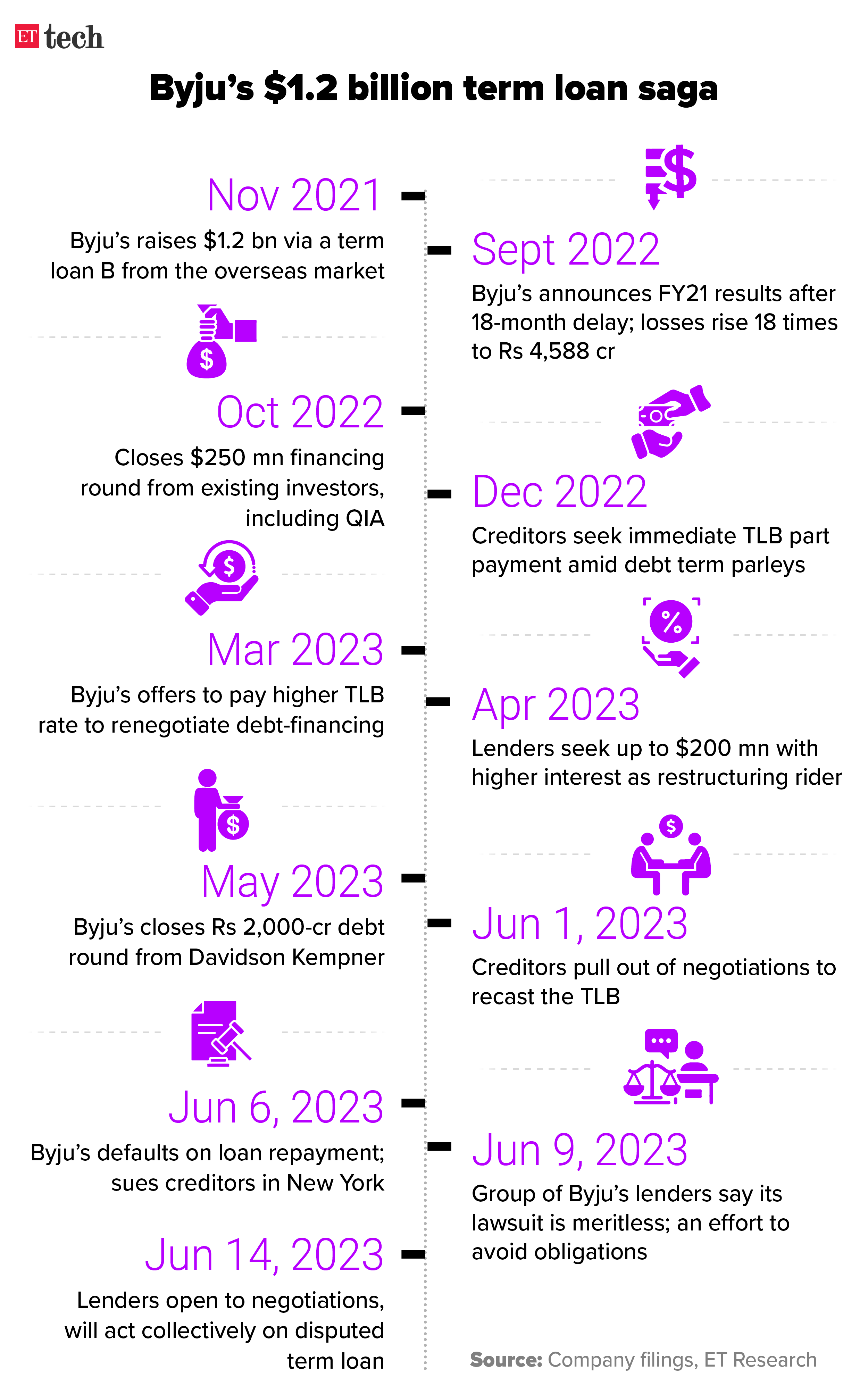
Timeline: Byju’s $1.2 billion loan case
Lenders’ response: The group of lenders, who claim to collectively own more than 85% of a $1.2 billion term loan taken by Byju’s, said the suit filed against their demand for an “accelerated” repayment was “meritless”.
Also read | Byju’s and the debt trap haunting Indian tech startups
Amazon Pay counts on wallets to push payments business

Amazon Pay has been lagging behind in the consumer payments race for quite some time now. But with its renewed bet on mobile wallets, and a shortcut for its payment mini-app on the home screen, the ecommerce major is trying to get its mojo back.
What’s the strategy? Amazon has enabled interoperability in its mobile wallet, which means that one can pay using any QR code. There are more than 60 million Amazon Pay wallets issued in the country. The company is trying to expand both the number of users and their spends.

Solving for discoverability: Perhaps one of the major problems for Amazon Pay is that unlike its peers Google Pay or PhonePe, Amazon has built its payment feature within the ecommerce app.
Vikas Bansal, whole time director, Amazon Pay India, told ETtech that they are still debating whether to create a separate app for Amazon Pay, and if they feel that there is a customer pain point they can solve with this, they might go ahead with a separate app.
What about its other services? Amazon has seen decent traction in its credit business. It has issued around 3 million co-branded credit cards with ICICI Bank. For customers who are not eligible for a credit card, Amazon offers its buy-now-pay-later product. Altogether, Amazon has around 10 million consumers who use its credit products.
But its insurance vertical has not scaled much, for which Bansal blames the offline nature of the business. However, he is confident that more people will buy insurance on Amazon once the online market matures.
ET Ecommerce Index
We’ve launched three indices – ET Ecommerce, ET Ecommerce Profitable, and ET Ecommerce Non-Profitable – to track the performance of recently listed tech firms. Here’s how they’ve fared so far.
LogiNext cofounder Manisha Raisinghani leaves to start SaaS firm

Manisha Raisinghani, co-founder, LogiNext Solutions, has moved on from the logistics software-as-a-service startup to build a new enterprise software venture, three people aware of the matter told ET.
Tell me more: Raisinghani’s new venture will not be competing with LogiNext Solutions, said people in the know. She is likely working on a startup comparable to the likes of Glean, a generative AI-powered enterprise search tool that personalises results based on what you’re working on, where you’re mentioned, what’s trending in your team, etc., they added.
Further, the new startup is in talks to raise a seed round of funding from early-stage investment funds such as Matrix Partners and Blume Ventures.
Raisinghani’s time at LogiNext: A source told ET that Raisinghani, a Carnegie Mellon University alumna, had quit from day-to-day operations at the company by late 2021. She was the chief technology officer (CTO) at the New Jersey-headquartered firm. The company is yet to make any formal announcement on her exit.
Background check: Prior to cofounding LogiNext Solutions with CEO Dhruvil Sanghvi, Raisinghani had worked in multiple software engineering roles at firms such as IBM, Warner Bros, and Mastek. Mumbai-based LogiNext Solutions, founded in 2014, had last raised $39 million from Tiger Global Management and Steadview Capital in 2020.
Other Top Stories By Our Reporters

In global AI season, AMD’s Lisa Su sees big opening in data centres: AMD revealed new details about the MI300 chip on Tuesday. MI300 is AMD’s most advanced graphics processing unit (GPU), which is believed to be a strong challenger to Nvidia.
Lenovo will invest $1 billion in AI over three years: Lenovo said it will invest $1 billion over the next three years in infrastructure solutions to accelerate artificial intelligence (AI) deployment for businesses.
Tally is thinking of accounting tech via images using AI/ML: Tally Solutions, the country’s largest home-grown accounting software maker, is exploring artificial intelligence and machine learning-powered capabilities like image capture and forecasting to expand its user base in India and globally.
Global Picks We Are Reading
■ ChatGPT is unoriginal—and exactly what humans need (Wired)
■ Reddit: profits, not protests, will determine IPO success (Financial Times)
■ The EU is leading the way on AI laws. The US is still playing catch-up (The Guardian)
For all the latest Technology News Click Here

